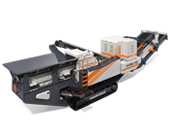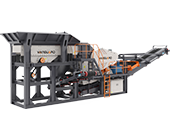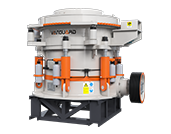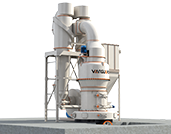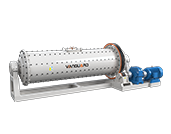Machine-made sand is made by crushing, screening, sand making machines and related equipment. The finished products are more regular and can be processed into the sand of different rules and sizes according to different technological requirements. It is widely used in hydropower, building materials, highways, etc. Urban construction and other industries. At present, many raw materials can be used for machine-made sand, and many stones can be processed into machine-made sand after being crushed. So, which stones can be made into machine-made sand? What is the process flow of the machine-made sand production line?

Common machine-made sand materials:
River stone:
River stone is a kind of material larger than 5mm formed under natural conditions. The surface is smooth, mostly round or oval, wear-resistant, hard texture, and chemically stable. It is a very high-quality machine-made sand material. The content of river stone is very rich in our country. The machine-made sand made from river stone is also called river stone sand. It has a uniform grain shape, good corrosion resistance, good quality, few needle pieces, good liquidity of mixed concrete mixing and other characteristics.

Granite:
Granite is a common type of rock, which is closely related to the tectonic, metamorphic, and mineralization of the continent. The main minerals are quartz, potash feldspar, and acid plagioclase. And the secondary minerals are biotite, amphibole, and sometimes with a small amount of pyroxene. Granite has excellent texture, a very compact structure, high compressive strength, high surface hardness, low water absorption, good chemical stability, strong durability, and excellent texture. The granite sand produced is of high quality and is a good raw material for machine-made sand.

Limestone:
The main component of limestone is calcium carbonate, which is currently being widely used in the construction industry and industries. It can be used as a raw material for sand and stone in the sand production line. Due to the low hardness of limestone, the wear of sand making equipment is small. Compared with other materials with higher hardness, the cost of producing machine-made sand is lower, and the gradation can be selected flexibly according to the demand for finished products.
Sandstone:
Sandstone is a kind of sedimentary rock. Stone particles are deposited in the river bed after being eroded by running water. After tens of thousands of years of accumulation, they become solid. Made using sandstone mechanism when made with natural sand and concrete can be comparable in performance. In terms of mechanical properties, compressive strength, axial compressive strength and modulus of elasticity, it shows better performance characteristics than river sand concrete.
Basalt:
Basalt is a basic extruded rock, and its chemical composition is similar to that of gabbro or diabase. Basalt has excellent compressive and flexural performance, good abrasion resistance, and low water absorption. It is a widely used building material. The machine-made sand made of basalt has many excellent characteristics such as compression resistance, corrosion resistance and wear resistance. In addition to being widely used in the field of construction, it can also be applied to various fields such as railways, bridges, and industry.
Marble:
Marble is a recrystallized limestone whose main component is CaCO₃. Limestone softens under high temperature and pressure and recrystallizes to form marble when the minerals in it change. The main components are calcium and dolomite, and the Mohs hardness is between 2.5 and 5. Marble is a kind of natural sandstone. After crushing and sand making, the finished product has a uniform particle size and the good grain shape. The sand made is a high-quality sand and gravel aggregate.
Iron ore:
Iron ore itself has better durability and abrasion resistance, so the iron ore materials larger than the processing range of the equipment should be separated and do not enter the machine. Then choose a suitable sand making machine according to the nature of the iron ore. General construction sand requires that iron ore's internal and external content should not exceed 15% and 5%, respectively. If the content is too high, it will have a certain impact on the strength of iron ore. It can process Iron ore tailings, and the products have uniform particle size and good particle shape. It can be used as construction aggregates for concrete, non-burning bricks, and other industries.
Construction waste:
Construction waste is a collective term for the muck, waste concrete, and waste masonry produced in the construction industry such as demolition, construction, decoration, and repair. These raw materials can be crushed and screened into the sand and gravel aggregates with good effect and the broad market that can re-applied in construction, highway, and other industries.

The sand production line has a high degree of automation, low operating cost, high crushing rate, energy saving, large output, less pollution, and easy maintenance. The machine-made sand produced by the sand production line meets the national construction sand standard with uniform particle size, good grain shape, and gradation reasonable.
The machine-made sand production line is composed of vibrating feeder, jaw crusher, sand making machine, vibrating screen and belt conveyor. According to different process requirements, it combined various types of equipment to meet the different process requirements of customers.
Process flow introduction of machine-made sand production line:
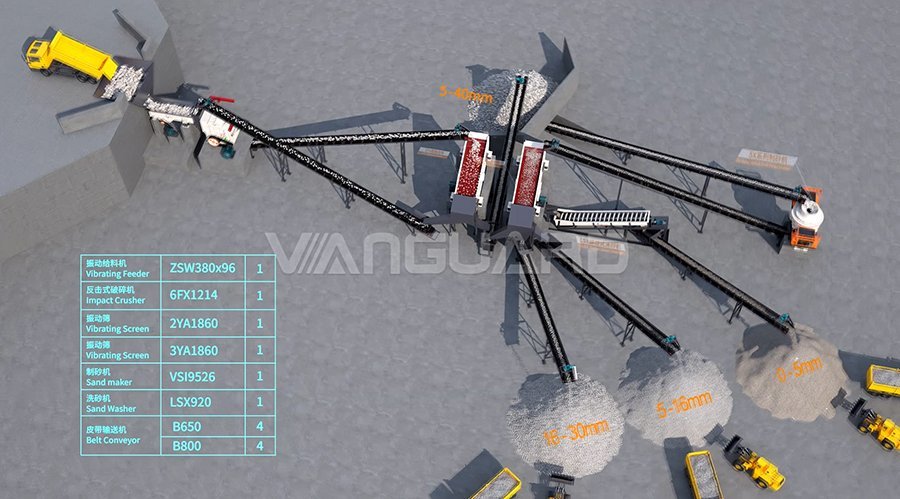
The stone material is sent to the vibrating feeder through the silo, and a part of the slightly finer stone screened out by the feeder is sent to the transition silo through the impurity removal belt, and the larger stones are sent to the transition silo after coarse crushing. The materials in the transition silo are relatively uniform. These materials are finely broken and then screened by a vibrating screen. The larger materials are then crushed. The fine materials screened out by the vibrating screen are sent to the sand making machine for sand making. After the machine starts to work, the material to be crushed is fed into the crushing cavity from the feed inlet. The material is divided into two parts by the dividing plate. One part enters the high-speed rotating impeller and is driven by it to accelerate rapidly. Then, the three uniformly distributed impellers The flow channel is thrown out, and the material falling freely with the distribution plate is first impacted and broken, and then impacted on the material lining layer in the vortex cavity together, rebounded by the material layer, and impacted diagonally upwards to the top of the vortex cavity, and its direction is changed. It moves obliquely downwards and forms a material curtain together with the material ejected from the impeller runner. In this way, each piece of material is crushed by at least 2 or even multiple collisions, frictions and grinding actions in the crushing cavity. The material crushed to a suitable particle size is discharged from the sand making machine through the lower discharge port.
After the new material enters the split hopper, it enters the high-speed rotating rotor through the central feed hole, is driven by it to fully accelerate, and is thrown out of the launch port. It first collides with a part of the material that has fallen freely after the rebound and then impacts the surrounding crushing cavity together. The top of the counter-attack block is first bounced to the bottom, and then deflected to move downwards, and form a continuous material curtain by impacting with the material emitted from the impeller. The final product is discharged from the discharge port, and after the screening, the finished machine-made sand is obtained.
Vanguard Customer site of machine-made sand:
1.
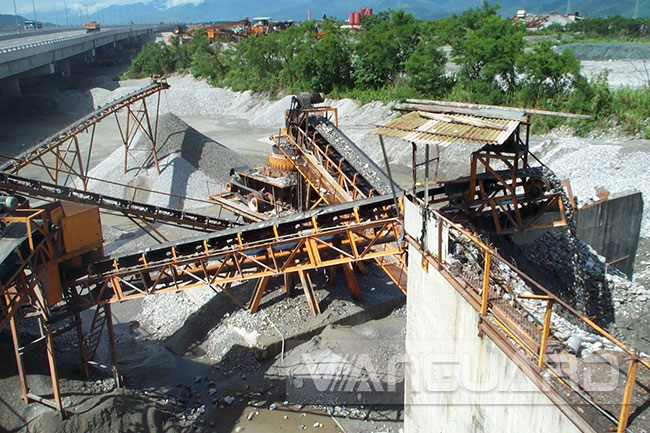
Raw materials:limestone
Capacity:300T/H
Auxiliary equipment:feeder, European type hydraulic impact crusher, vibrating screen, pulse dust collector
2.
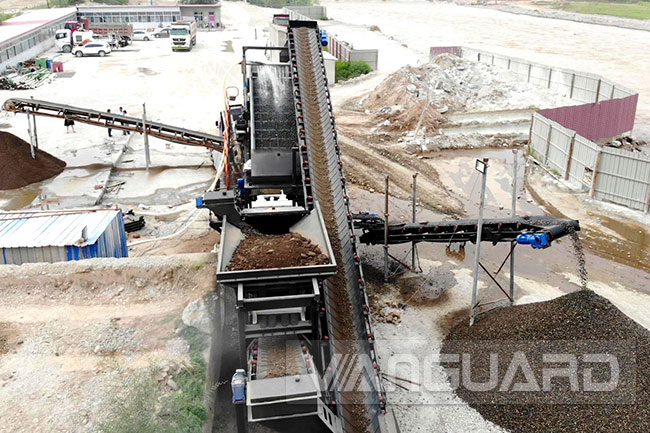
Raw materials:construction waste
Capacity:150T/H
Auxiliary equipment:VPM-3 combined mobile crushing plant
Vanguard Machinery is a professional manufacturer mainly engaged in the processing of comprehensive supporting equipment such as aggregate production, construction sand, and urban construction waste treatment. According to the on-site survey situation and the actual requirements and different process requirements of customers, it can design and plan the layout plan for customers.

